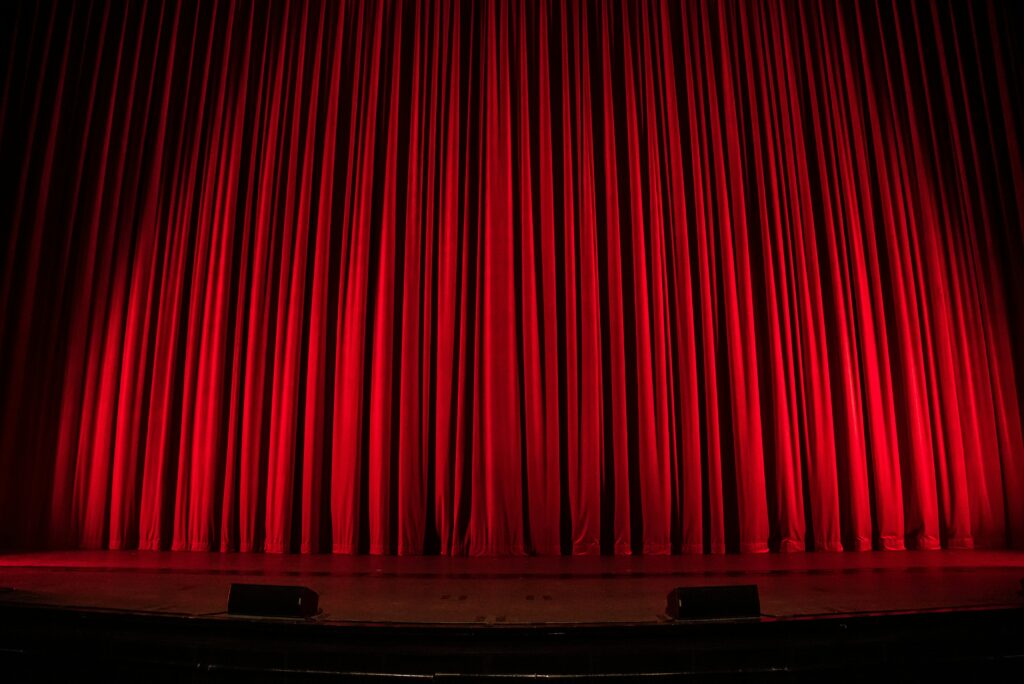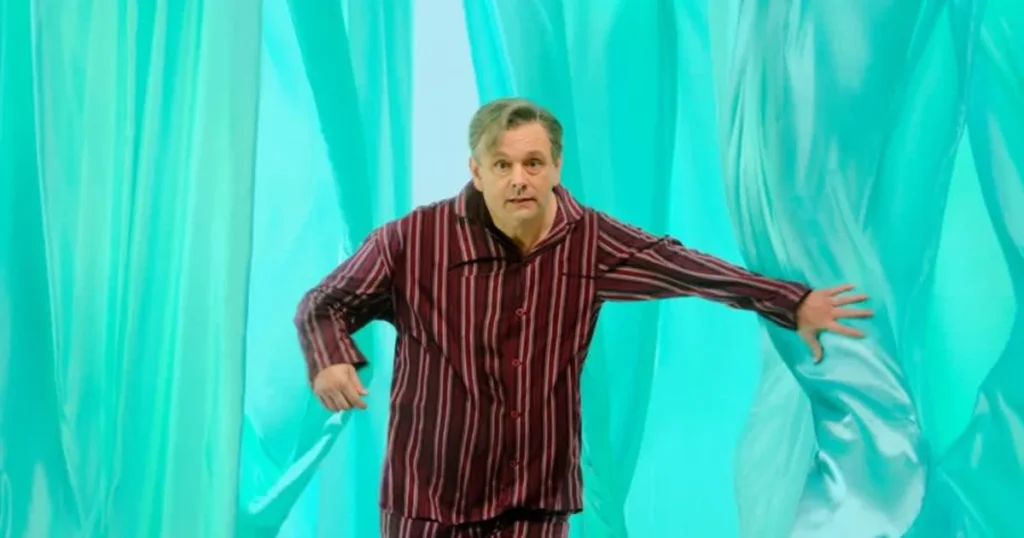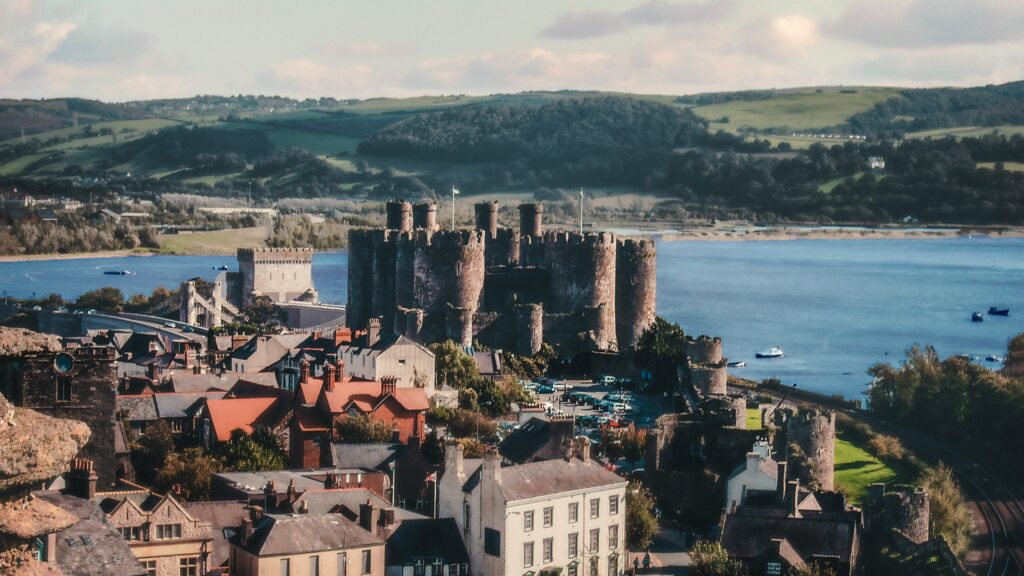Peter Stead reviews a new exhibition of Colin Riddle’s photographs
In a standout-image in Colin Riddle’s exhibition at Swansea Museum three well-dressed ladies support each other as they negotiate a difficult, sloping, curving, end of terrace section of pavement in one of the town’s not untypical hilly neighbourhoods. The photograph is essentially one depicting the extensive brickwork of an earlier generation of masons. In this drab urban context the ladies provide both colour and personality, but they do not have the photograph entirely to themselves. High above them on a perilously perched terrace a family’s washing has been strung out to dry on what is fairly obviously not a drying day. We are in the early 1960s, hereabouts household appliances are still someway off. Television advertising in still in its infancy and meanwhile, at this spot, the street adverts of an earlier era linger on. In our childhood many of us practised our reading skills by reciting these words which were attached to many walls on enamel sheets. On their later climb home our ladies would be firmly reminded that it was time to restock with Brooke Bond Tea as well as Colman’s Mustard and Starch.
Not surprisingly Colin Riddle has selected this brilliant evocation of a British townscape at what was for some a moment of social and cultural transition (changes coming more quickly in some areas than others) as the front cover of his stunning accompanying book. Inside the book he reproduces the photograph that he had actually stopped to take. His intended subject were the enamel signs. The initial photograph has its own appeal. The skies are less overcast but the bend in the road seems even more absurd and dangerous. This time there is only one figure, a lady struggling with the uphill gradient. Perhaps she is not quite in the right position: she needed to be more directly under the centrally highlighted adverts. The photographer was probably standing and pondering these points when our four ladies came around the corner and presented him with the opportunity to capture a richer scene. By subsequently taking the blue out of the sky and making the ladies the focus a great photograph exuding cultural nuances as well as aesthetic appeal emerged.

The charm of Riddle’s book is that he talks us through every image in this way. En route he explains his Swansea upbringing and college training as well as the cameras he used and the variety of ever-more sophisticated studio techniques he used to produce his required images. What is refreshing is his honesty with regard to surprises. As we have seen, the photographer has to be prepared to react to sudden changes and to gamble, but even then he will discover things in his prints that he could never have anticipated. He has given us a photographer’s autobiography, one that was always inspired by the belief that he could use his camera to capture the drama and contrasts inherent in the townscape that lay around him in Swansea, a town (as it was then) whose fabric offered physical absurdity, decay and gloom even as the inhabitants generated their own social energies. There is a marvellous section of children’s photographs. These are clearly children from the poorer suburbs, not far removed from the urchins of an earlier era, but nonetheless they display a robust energy: they are Swansea jacks who will always look the world in the eye.
Above all else Riddle reminds us of how culturally and physically unpleasant it was to live through the de-industrialisation of the 1950s and 1960s: as if the Blitz had not been enough! As a town Swansea was driven well down the league table of desirable locations, a demotion from which it has never really recovered. Riddle opens his portfolio with an image of a wet and crumbling Wellington Street in which passers-by were invited to ‘Go One Better’ by voting Communist and/or to read the Queen Mother’s Life Story in the News of the World, a juxta-positioning that suggest that advertising agencies had a sense of humour. In another photo the voters of Greenhill were informed that ‘All Parties Vote For Rhymney’: the pub was often the best bet.

At the Exhibition one sensed that the keenest interest was in the section of photographs depicting the streets around Constitution Hill, streets that offer the consolation of sea views even as they seem to defy the laws of physics. It has been suggested that Einstein came up with the notion of spacetime being curved whilst visiting the dip in Cromwell Street. Riddle’s photos convey the full big dipper effect offered by the street itself. I had to steady myself.
Those crazy hills that huddle around Swansea Bay just cry out to be written about or photographed. In 1961 Riddle was fascinated by watching Sidney Gilliatt filming Only Two Can Play above Swansea, a film in which the great Peter Sellers seemed well at home on the local slopes. Riddle’s location shots are truly memorable. His remarkable photo of a TV company setting up interviews on Mayhill capture the very essence of Swansea, that Valleys town by the sea. It’s a wonder that many more film companies haven’t exploited these higgledy-piggledy streets but, of course, other people have. Edward Thomas, Dylan Thomas, Kingsley Amis have all reflected on Swansea’s infuriating mix of the ugly and sublime. There is something about the place and Colin Riddle’s work, splendidly curated by Karl Morgan of the Royal Institution of South Wales, work will make you think seriously about what that thing is.
SWANSEA: A PHOTOGRAPHER’S DREAM: at Swansea Museum until Jan. 14th
All articles published on Click on Wales are subject to IWA’s disclaimer.






It’s a great book, it’s a great exhibition. I commend it to anyone who has an interest in the town (as it was, of course), in industrial history (those Weaver’s shots!) or the near suburbs (I’m a Mount Pleasant native and it’s easy to forget how peculiar all those hills and how giddy those views are).
I had the pleasure of meeting Colin during my trip to the Museum earlier this year. He was kind enough to subsequently send on a card of some street kids playing outside my family home back in the late 60s. Really touching. I wish him all the best with this and future enterprises.